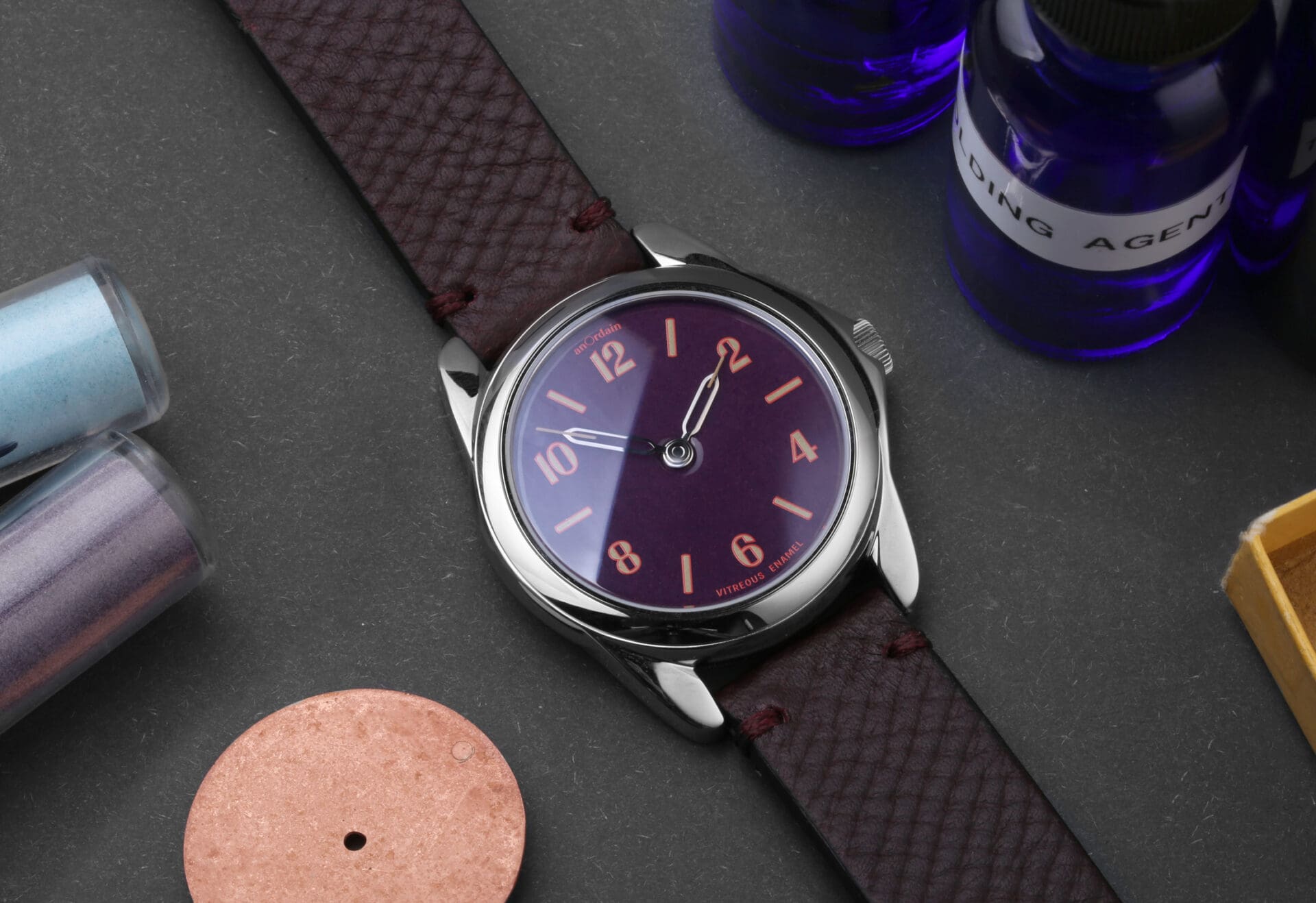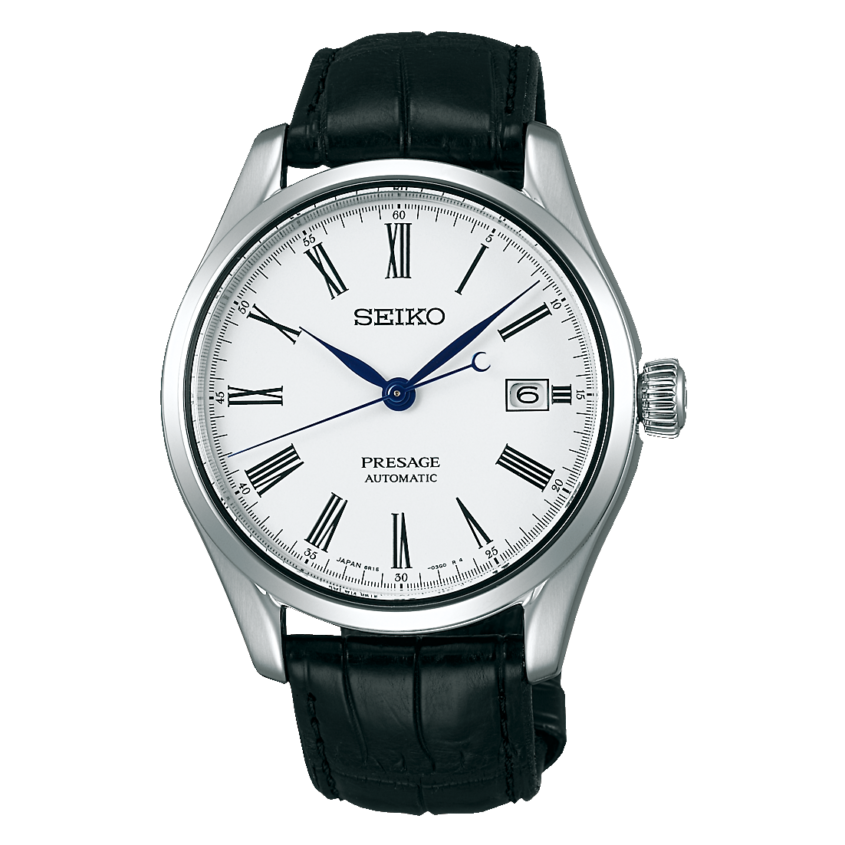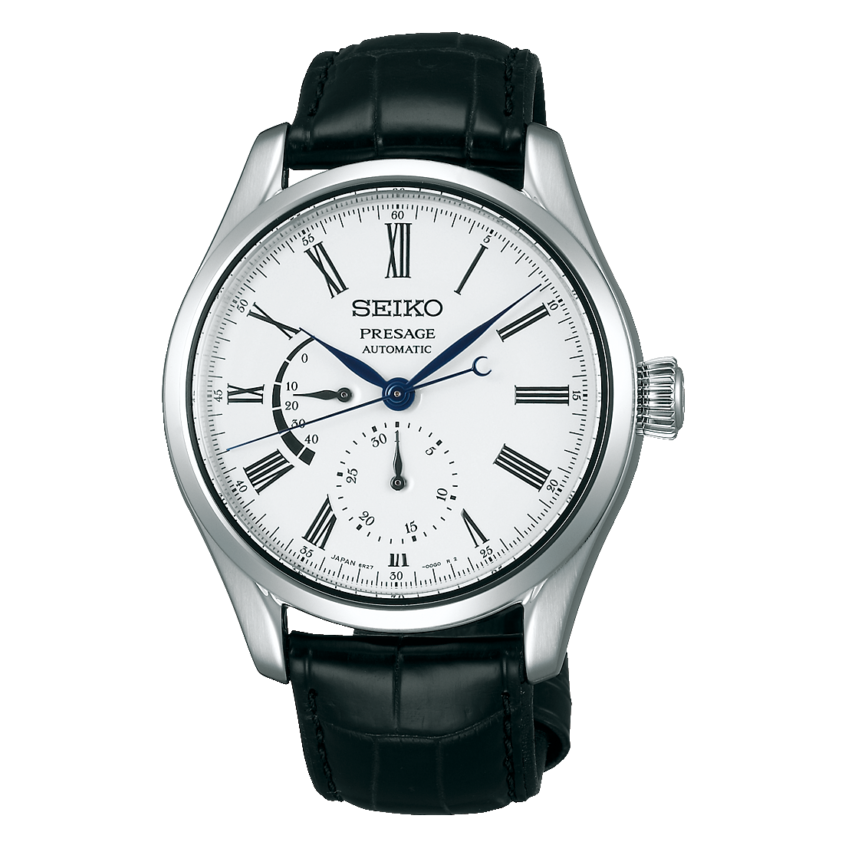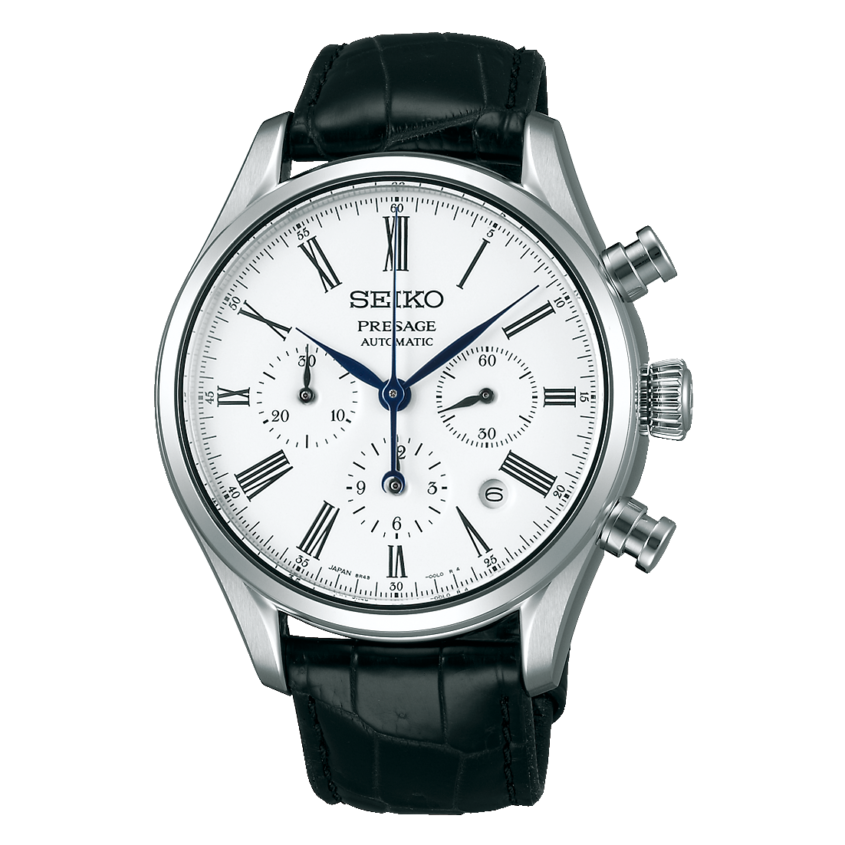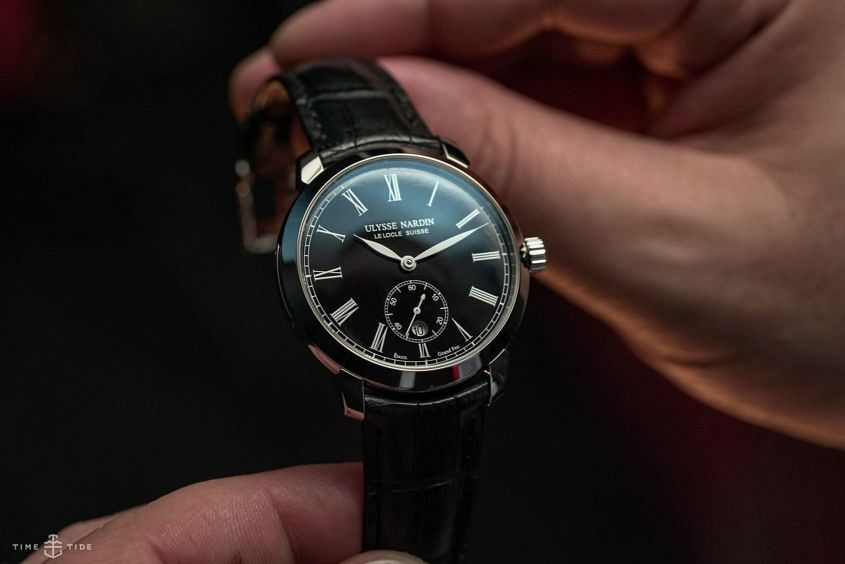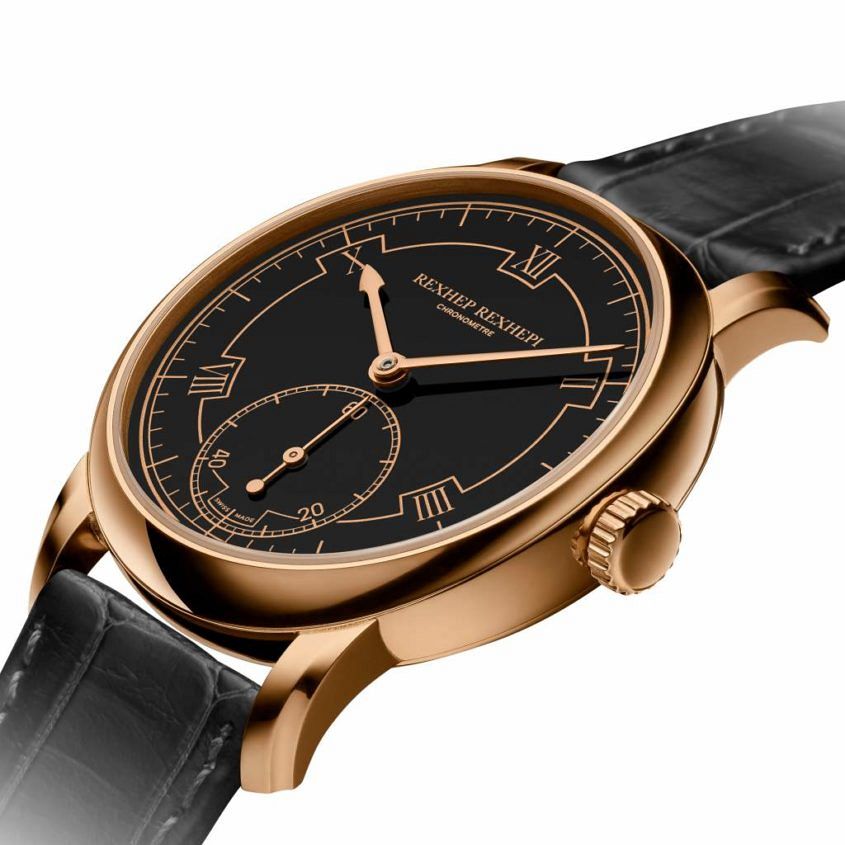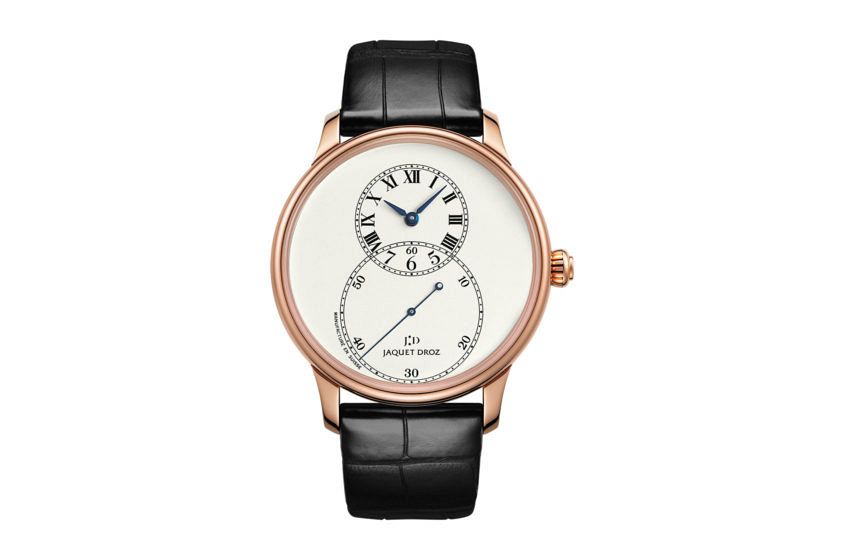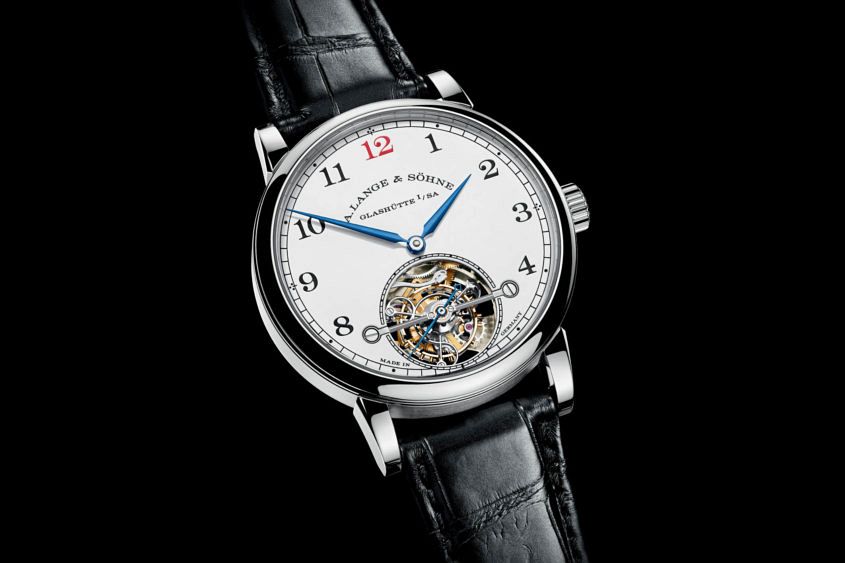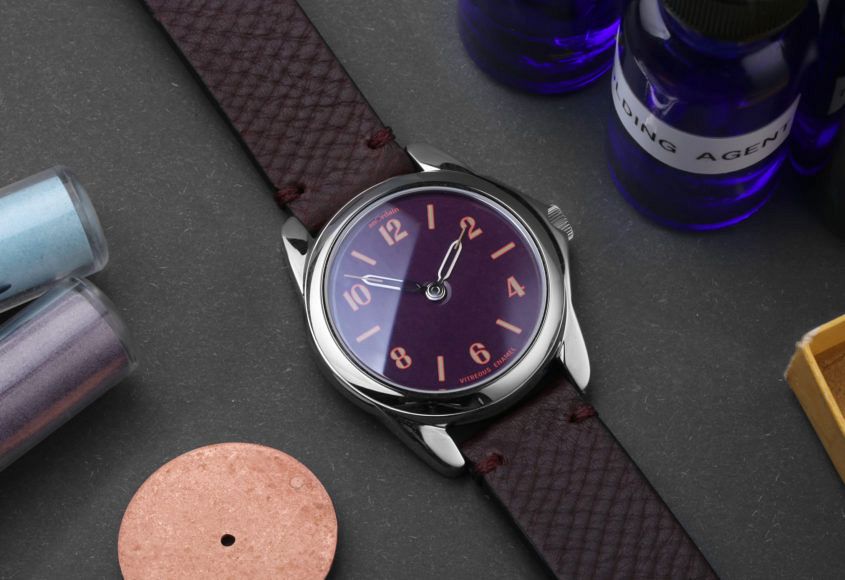6 of the best Grand Feu Enamel Dials
Sandra LaneAn enamel dial elevates a watch to a different level, whether it comes in the form of a brightly coloured world map, a hyper-realistic image of a flower, a jewel-toned expanse of colour that seems to float above a textured base, or an ethereal grey-scale image of a lion – accurate to the last tuft of fur. Its beauty speaks volumes for the skill of its creator. Because enamel is really darned hard to do – let alone do well – no matter which enamel technique it is. (The examples I just listed are, respectively, cloisonné, miniature-painting, flinqué – or, in Japan, shippo – and grisaille. There are more.)
But, counter-intuitively, one of the hardest of all to master is the most subtle, the least “wow, that obviously took incredible skill” technique. I’m talking about the plain white (or less often seen, black or a single colour) grand feu enamel dial. To quote that truism of design, simple things are always the hardest to do well. (Sub-text: if you make a mistake, there’s nowhere to hide). The mirror-perfect finish demanded of a plain grand feu enamel dial sends that simple-hard challenge off the scale. That has a lot to do with the material itself; it’s as if the Gods invented grand feu enamel in order to cause problems. And that has a lot (but not everything) to do with what we all learned in Third-Form science: subjecting unstable materials to extreme heat is usually a Bad Idea.
The technique consists of grinding crystals of silica-rich glass to a perfectly uniform talcum-powder-fine consistency (by hand, with mortar and pestle; not easy), then applying it to a metal dial base (either as a powder or mixed with oil or water) and firing it in a hot-as-Hades kiln (grand feu translates literally as big fire; above 800C to be precise). Then repeating the process again and again to achieve a rich, deep finish. Every firing increases the risk of breaks, cracks or bubbles – and the slightest flaw? Straight into the bin and start again from scratch. As if that wasn’t hard enough, a perfect result is then subjected to a whole litany of new ways to ruin it: flattening the dial, trimming the edges, printing the numerals. At Donzé Cadrans, recognised as the world’s best at the grand feu game, the rejection rate, from start to finish of the process, is above 60 per cent.
With dark-coloured or black enamel, the rejection rate is even higher because the enamel pigments are more temperamental and the tiniest flaw is even more obvious on a dark surface.
All of this – the days they take to produce; the years it takes the artisans to develop their skills; the high rate of rejection – explains why grand feu enamel dials cost more than other finishes. That’s the rational side. But what about our hearts? Why should we “want” an enamel dial – with its greater cost – above other finishes? A close look gives us the answer: grand feu enamel has a deep, almost creamy inner glow (yes, even when it is snow-white or soot-black) that no other finish can replicate. It seems organic; it has soul. That’s where we get the real value for our money.
These are six of my favourite watches with grand feu enamel dials – at different price levels, including some that may surprise: you don’t necessarily need to pay a king’s ransom for such beauty.
SEIKO PRESAGE ENAMEL DIAL (2017)
In 2017, under its Presage brand, Seiko released a trio of watches with white enamel dials – a collection that has become a pillar of the catalogue. The Persil-white enamel, executed by master craftsman Mitsuru Yokosawa and his team, has that characteristic inner glow, complemented by the fine Roman numerals printed in clear black. The simplest watch is the ref. SPB047J1, an automatic, 3-hand-plus-date model in a 40.5mm steel case; it’s powered by calibre 6R15, which provides a 50-hour power reserve.
Next up – also in a 40.5mm steel case – is the ref. SPB945J1, an automatic with power reserve display and the date on a sub-dial. This is Presage’s Vegemite dial layout – commonly seen complications in an uncommon arrangement (love it: asymmetric; hate it: off-balance). Its movement, Calibre 6R27 provides 45 hours of power reserve.
The third member of the trio, the automatic chronograph (ref. SRQ0231J), powered by calibre 8R48, comes in a 42mm case and has a power reserve of 45 hours.
ULYSSE NARDIN CLASSICO GRAND FEU (2018)
If we had to name one watch as the icon of the white grand feu enamel dial, this is the one. It encapsulates all of the classical design codes that give contemporary voice to the tradition of enamelling: understated and simple, with a 40mm case, it’s both dressy (yet not a formal dress watch) and casual (but not a full-on sports watch). Rather, it’s the ideal of an everyday all-rounder. And it is powered by Ulysse Nardin’s thoroughly reliable calibre UN-320 – the company’s entry-level in-house automatic movement. And the price is remarkably wallet-friendly in relation to quality.
But the real reason for ‘enamel icon’ status is this: the dials are made by Donzé Cadrans – and in the perfection of both the white and black versions of these dials, we understand just why Donzé is considered to be the master of classical grand feu enamelling. (In 2011, Donzé Cadrans was acquired by Ulysse Nardin and creates all of its enamel dials, as well as working for many other brands.)
AKRIVIA CHRONOMÈTRE CONTEMPORAIN ‘REXHEP REXHEPI’ (2018)
Given the way Akrivia is reinterpreting traditional watchmaking for the 21st century, it’s little wonder that this independent atelier, and its founder Rexhep Rexhepi, have become the new darlings of the collectors’ community. The Chronomètre Contemporain is the simplest watch produced by Akrivia and the first to carry Rexhepi’s own name on the dial. Few were surprised when it won the 2018 GPHG award for Best Men’s Watch. Inspired by officers’ watches of the 1940s, both its styling and its mechanics are understated, extremely detailed and beautifully crafted. The hand-wound movement, calibre RR01 beats at a traditional 18,000 vibrations per hour; it has hacking seconds and zero-reset mechanisms and is chronometer-certified.
For a watch like this, an enamel dial – with all of the tradition and craft it represents – is the absolutely natural choice. It is offered in black (in a pink gold case) or white (in platinum). To state the blindingly obvious, black and white are absolute opposites – but the decoration on these dials enhances the qualities of each, emphasising how different they are: gold markings on black plays on depth and richness; blue on white emphasises clarity and refinement. Both are sublime.
JAQUET DROZ GRANDE SECONDE IVORY or BLACK
When Swatch Group bought the centuries-old (and long-dormant) Jaquet Droz brand in 2000, they set out to reinterpret the style and the approach to horology pioneered by Pierre Jaquet-Droz in the mid-18th century. Two things became emblematic of the modern brand: the ‘figure-8’ dial layout and the grand feu enamel dials – elements taken from a 1784 pocket watch. A genius way to make anachronism look totally contemporary – epitomised by this, the simplest model in the Grande Seconde line-up.
In the absence of a bezel, the dial extends to almost the full 43mm diameter of the case – a very big expanse of enamel with a lot of white-space, so it has to be absolutely flawless. Another signature of a Jaquet Droz enamel dial is that, rather than pure white, it’s a warm, pale ivory colour – and, as an alternative, there is darker-than-midnight black. And with both, Jaquet Droz’s enamellers achieve an unusual depth and richness.
The watch is powered by the self-winding Calibre JD 2663A, which, like other Jaquet Droz movements, originated from its sister company, F.Piguet/Blancpain, and is modified, hand-decorated and finished in-house to a very high level. It boasts a finely decorated 22-carat gold rotor and its double barrel provides a hefty, 68-hour power reserve.
A.LANGE & SÖHNE 1815 TOURBILLON (SPECIAL EDITION) (2018)
How do you make a Lange better than a Lange? Give it an enamel dial. That’s what Lange did with its 1815 Tourbillon – releasing a 100-piece limited edition last year, in platinum with a pure white enamel dial. Setting it alongside the “standard” model with the argenté dial, you immediately see the visual depth and silky smoothness of the enamel. It has an almost porcelain-like quality, which accentuates the classicism of the dial design.
The number ‘12’ in bright red provides a little visual jolt – a game that Lange is fond of playing in special cases (another example: the red power reserve indicator on the Richard Lange Jumping Seconds). Simple enough, you may think – except that it added a whole extra step to the dial-making because each ink colour needs firing slightly differently. Another detail: although the case diameter is 39.5mm, as on the standard model, its height had to be increased by 2mm (to 11.3 mm) to accommodate the thickness of the dial. That’s an awful lot of extra work for the sake of a lovely face.
A technical ground-breaker when introduced in 2014, the hand-wound calibre L102.1 carries two patents – for the stop-seconds mechanism, which stops the tourbillon cage when resetting the time, and the zero-reset function.
ANORDAIN MODEL 2
And finally, a micro-brand from a place you’re unlikely to associate with watchmaking – let alone with grand feu enamel dials: Glasgow, in Scotland. Named after a remote Highland loch, anOrdain was founded by former industrial designer Lewis Heath and some friends. The idea was always to have enamel dials – with the other elements of the watches designed around that – but there was one issue: nobody knew how to do enamel. Solution: teach yourselves. Three years, 168 different kinds of raw enamel material, and 4000 hours of trial-and-error later, they were ready to roll. A key marker of the brand: unusual enamel colours (a misty pale blue, mossy green, bright red) as well as the classics – and a dip in the centre of the dial by the post where the hands are fixed, which was a characteristic of enamel dials in past centuries and emphasises their hand-made quality.
The numerals – designed in-house and based on the font used for British Ordnance Survey maps – are pad-printed with the same kind of glass ink used by Scotch whisky bottlers. That wasn’t a case of “trying to be Scottish” but because of its better adhesion, which also allows the use of metallic inks.
anOrdain’s Model 1 watch is now sold out and they have just released Model 2, in a 36mm case of hardened steel, powered by a tried-and-trusty Sellita SW-210-1 movement. You can choose a leather or suede strap or a steel Milanese-type mesh bracelet and the watch comes with a 5-year warranty – which is quite something for such a small producer.




